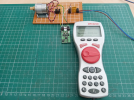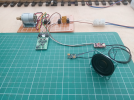Lez2000
Registered
I'm after a bit of advice please. I'm looking for a reasonably priced decoder tester and so far have come across these:
Zimo MXTAPV and the ESU 53900.
There is quite a difference in price between them (Zimo almost double) but is the higher cost justified?
I'm assuming these are capable of testing any manufacturers decoders?
I would be very interested to hear your thoughts and experiences.
Thank you,
Les.
Zimo MXTAPV and the ESU 53900.
There is quite a difference in price between them (Zimo almost double) but is the higher cost justified?
I'm assuming these are capable of testing any manufacturers decoders?
I would be very interested to hear your thoughts and experiences.
Thank you,
Les.



